David A. Riley's Blog, page 95
February 5, 2014
I Am Providence by S. T. Joshi
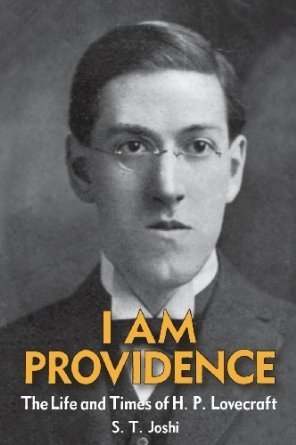 I am enjoying Joshi's I Am Providence, which is perhaps the most detailed biography of Lovecraft you could ever hope to come across, but I wish he would resist just now and then from giving his evaluation on every story, travelogue, poem, etc that Lovecraft wrote. And on many stories that other people wrote as well. I like a biography to be factual, not littered with critical comments unless there is some genuine reason for it. I have my own opinion on the merits or otherwise of these stories and I really don't need to have them all compared to how closely they fit in with Joshi's preference for cosmicism. My only gripe so far, mind. Other than this it's a great book and I have learned a lot from it.
I am enjoying Joshi's I Am Providence, which is perhaps the most detailed biography of Lovecraft you could ever hope to come across, but I wish he would resist just now and then from giving his evaluation on every story, travelogue, poem, etc that Lovecraft wrote. And on many stories that other people wrote as well. I like a biography to be factual, not littered with critical comments unless there is some genuine reason for it. I have my own opinion on the merits or otherwise of these stories and I really don't need to have them all compared to how closely they fit in with Joshi's preference for cosmicism. My only gripe so far, mind. Other than this it's a great book and I have learned a lot from it.
Published on February 05, 2014 05:38
February 4, 2014
Dexter - the final series

Unlike a lot of people I really liked and appreciated the dark nihilism of the final season of Dexter. It was never going to have a happy ending - and the one it had - dark, bleak, ongoing - was as near perfect as you could get.
I think Gary McMahon, on his blog, summed it up better than I possibly could. Check this out on the following link: Dexter - Remember the Monsters.
Published on February 04, 2014 05:46
Herbert Manning's Psychic Circus and Other Dark Tales by David Williamson
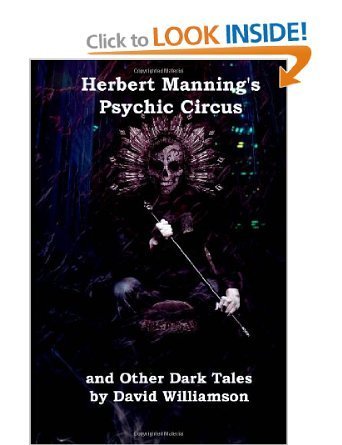 David Williamson has just had a collection of stories published by Hazardous Press,
Herbert Manning's Psychic Circus and Other Dark Tales
. It's available in both paperback and ebook formats. David Williamson's stories first appeared in the Pan Books of Horror and he has since become a regular in Charles Black's Black Books of Horror, in which many of the stories in this collection were first published.
David Williamson has just had a collection of stories published by Hazardous Press,
Herbert Manning's Psychic Circus and Other Dark Tales
. It's available in both paperback and ebook formats. David Williamson's stories first appeared in the Pan Books of Horror and he has since become a regular in Charles Black's Black Books of Horror, in which many of the stories in this collection were first published.About the AuthorDavid Williamson has been writing short stories for many years now, inspired by the likes of James Herbert, Stephen King and, especially, The Pan Book of Horror series. When (after several attempts!) he was first published in The 28th Pan Book of Horror, he became almost speechless with excitement. Later, after discovering that he was to have THREE of his tales in The 30th Pan Book of Horror, he became a gibbering imbecile. A state, alas, which he has remained in until today. He has more recently, appeared in Black Books of Horror (the spiritual home of The Pan Books of Horror) numbers 5, 6, 7, 8 and 9 from Mortbury Press, as well as Hersham Horror's wonderful Alt-Zombie anthology. His latest tale, 'Lazarus', can be found in From Their Cradle to Your Grave, from Cruentus Libri Press and also in their Christmas Special You'd Better Watch Out! with his tale entitled 'Tis the Season to be Jolly'. His story 'Stuck!" appears in Another 100 Horrors, and 'The Mission' can be found in War is Hell, again, both from Cruentus Libri Press. His story '10 Weeks' appears in the anthology Horrific History, from Hazardous Press. Follow David online at http://doogal321.wordpress.com.
Published on February 04, 2014 01:47
February 3, 2014
Tenebrous Tales by Christopher Richard Barker available on kindle
I was sorry that I missed out on getting a copy of Christopher Richard Barker's short story collection
Tenebrous Tales
when it was originally published by ex-occidente. I have just learned, courtesy of D. F. Lewis, that it is now available on kindle.
Barker also has an interesting blog: Elegant Horrors, which is well worth perusing.
The collection includes:
The Melancholy Haunting of Nicholas Parkes Subtle DifferencesThe Motiveless PursuitSnow TrainThe Sinister Cupboard The Man Who Fell AwakeThe Tableaux The Cliff PathDrill HeadThe Thing in the Tree
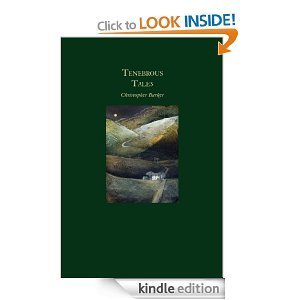
Barker also has an interesting blog: Elegant Horrors, which is well worth perusing.
The collection includes:
The Melancholy Haunting of Nicholas Parkes Subtle DifferencesThe Motiveless PursuitSnow TrainThe Sinister Cupboard The Man Who Fell AwakeThe Tableaux The Cliff PathDrill HeadThe Thing in the Tree

Published on February 03, 2014 05:11
Toby Whithouse, Creator of Being Human, is one of the Guests of Honour at this year's FantasyCon in York
Pleased to see that Toby Whithouse will be one of the guests of honour at this year's FantasyCon in York. His BBC series Being Human was one of the best genre productions put out by the Beeb for ages. http://en.wikipedia.org/wiki/Toby_Whithouse
FantasyCon 2014
FantasyCon 2014
Published on February 03, 2014 02:21
February 2, 2014
Great review for The Lurkers in the Abyss on hellnotes
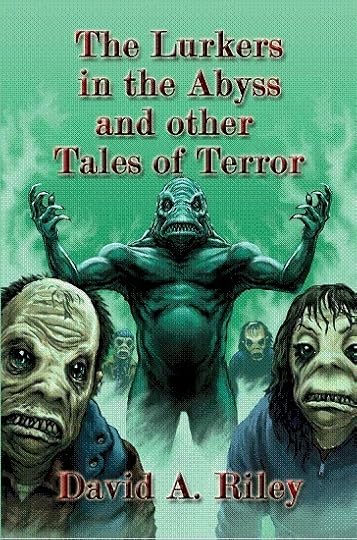 I was amazed to see a stunningly great review for my collection The Lurkers in the Abyss & Other Tales of Terror on hellnotes.
I was amazed to see a stunningly great review for my collection The Lurkers in the Abyss & Other Tales of Terror on hellnotes.Two quotes from it:
"The universe that Riley presents is not a forgiving one. Like Lovecraft, Riley’s early influence, his universe does not care about you nor is it concerned with whether you are a ‘good’ or ‘bad’ person or even what could be considered ‘fair’ in life. Many of the main characters in Riley’s fiction are people who are simply going about their regular lives until something happens and suddenly they have been marked by darkness."
"In the introduction, David A. Sutton characterizes Riley’s stories as “urban horror” and there is plenty of that here but there is also something more. Something that, like the work of Ramsey Campbell, is out of synch with the rest of reality. Even more, with Riley’s fiction, you are left with the feeling that you yourself, at any time, doing the most mundane acts, could be consumed by darkness."
To read the full review follow this link.
Published on February 02, 2014 11:19
January 29, 2014
Cthulhu Wallpaper
Let's see Laurence Llewelyn Bowen beat Cthulhu wallpaper. Who wouldn't love to have at least one wall covered in this?
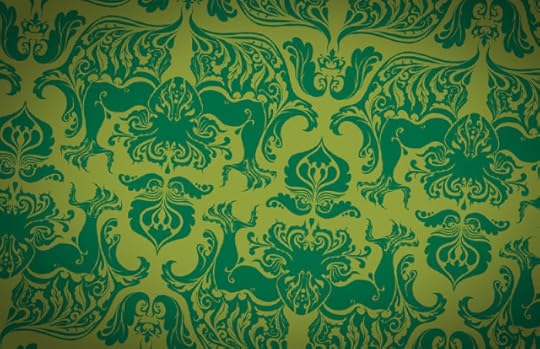

Published on January 29, 2014 05:33
January 27, 2014
Ginger Nuts of Horror - The Book That Made Me
 I had the privilege today to have the "Book That Made Me" slot on The Ginger Nuts of Horror website.
I had the privilege today to have the "Book That Made Me" slot on The Ginger Nuts of Horror website. w these days the Pan Horror series is often associated with over the top horror, much of it written under a variety of pseudonyms, but the first volume – and the largest in the series by far – has some of the biggest names in English literature in it, including Joan Aiken, Peter Fleming, C. S. Forester, L. P. Hartley, Noel Langley, Muriel Spark, and Angus Wilson, the like of which you would be unlikely to find today. There are also stories by Nigel Kneale - famous for his TV dramas such as Quatermass or The Stone Tapes and many others - and Hazel Heald, whose story I later learned was revised by none other than H. P. Lovecraft.
Heald’s story, The Horror in the Museum, was the first time I came across the Cthulhu Mythos, including the dread Necronomicon and some of the usual outlandish names of the “gods” or “demons” included in it, such as Shub-Niggurath, the Goat with a Thousand Young, and Yog-Sothoth. Of course, at the time, I had no idea who Lovecraft was nor any inkling of the Mythos, though it was a story that made a lasting impression on my eleven year old mind.
These were powerful stories. Angus Wilson, perhaps at the height of his literary fame, produced a memorably gruesome story, Raspberry Jam – and who could forget Oscar Cook’s His Beautiful Hands?
Part of the attraction then was the shared pleasure many of us in my form at school derived from stories which we knew were strenuously disapproved by our teachers – who would unhesitatingly confiscate any copy of the book they saw, though for every copy “nabbed” by the staff, others would appear as if by magic – even if they always somehow seemed to be in the same dog-eared state!
Though I was fascinated by most of the stories in this book – most of which stayed as fond memories in my mind – one of them actually put me off reading any more horror for quite some time. I wouldn’t be exaggerating to claim it could have put me off the genre for good. Luckily, like now, I rarely read stories in the order in which they appear in a book, as this was only the fourth one in. George Fielding Elliot’s The Copper Bowl appalled me. I felt sickened by what I read and I couldn’t believe what happened at the end. I still feel a bit of this to this day, and it’s not a story I can fully enjoy reading, though I have reread it since to see how horrifying it really is. To be honest, I have never had any great fondness for stories of this sort, which I suppose could be called a conte cruel – or maybe more accurately torture porn! And, though I nowadays appreciate the stories of writers like of Charles Birkin, I do prefer my horror to have a supernatural basis somewhere in it. Similarly in films I have no enthusiasm for the likes of Hostel or slasher movies in general.
After my imitation into horror with the Pan Book of Horror Stories I reverted back to science fiction. But that didn’t last – and in the next few years my interest was revived by anthologies like Vadim’s The Vampire and a chance, second-hand copy of H. P. Lovecraft’s Cry Horror! My fate was sealed. - See more at: http://gingernutsofhorror.com/10/post... I came across a dog-eared copy of this book, furtively passed round hand to hand during my first years at Accrington Grammar School, I had been an avid visitor to my local children’s library, where I devoured every copy of Captain W. E. Johns’ Biggles books – and his far less well-known science fiction stories too, before reading proper science fiction when I moved on to the adult library. At the time science fiction was the only genre I read till I came across van Thal’s book........ I know these days the Pan Horror series is often associated with over the top horror, much of it written under a variety of pseudonyms, but the first volume – and the largest in the series by far – has some of the biggest names in English literature in it, including Joan Aiken, Peter Fleming, C. S. Forester, L. P. Hartley, Noel Langley, Muriel Spark, and Angus Wilson, the like of which you would be unlikely to find today. There are also stories by Nigel Kneale - famous for his TV dramas such as Quatermass or The Stone Tapes and many others - and Hazel Heald, whose story I later learned was revised by none other than H. P. Lovecraft.
Heald’s story, The Horror in the Museum, was the first time I came across the Cthulhu Mythos, including the dread Necronomicon and some of the usual outlandish names of the “gods” or “demons” included in it, such as Shub-Niggurath, the Goat with a Thousand Young, and Yog-Sothoth. Of course, at the time, I had no idea who Lovecraft was nor any inkling of the Mythos, though it was a story that made a lasting impression on my eleven year old mind.
These were powerful stories. Angus Wilson, perhaps at the height of his literary fame, produced a memorably gruesome story, Raspberry Jam – and who could forget Oscar Cook’s His Beautiful Hands?
Part of the attraction then was the shared pleasure many of us in my form at school derived from stories which we knew were strenuously disapproved by our teachers – who would unhesitatingly confiscate any copy of the book they saw, though for every copy “nabbed” by the staff, others would appear as if by magic – even if they always somehow seemed to be in the same dog-eared state!
Though I was fascinated by most of the stories in this book – most of which stayed as fond memories in my mind – one of them actually put me off reading any more horror for quite some time. I wouldn’t be exaggerating to claim it could have put me off the genre for good. Luckily, like now, I rarely read stories in the order in which they appear in a book, as this was only the fourth one in. George Fielding Elliot’s The Copper Bowl appalled me. I felt sickened by what I read and I couldn’t believe what happened at the end. I still feel a bit of this to this day, and it’s not a story I can fully enjoy reading, though I have reread it since to see how horrifying it really is. To be honest, I have never had any great fondness for stories of this sort, which I suppose could be called a conte cruel – or maybe more accurately torture porn! And, though I nowadays appreciate the stories of writers like of Charles Birkin, I do prefer my horror to have a supernatural basis somewhere in it. Similarly in films I have no enthusiasm for the likes of Hostel or slasher movies in general.
After my imitation into horror with the Pan Book of Horror Stories I reverted back to science fiction. But that didn’t last – and in the next few years my interest was revived by anthologies like Vadim’s The Vampire and a chance, second-hand copy of H. P. Lovecraft’s Cry Horror! My fate was sealed.- See more at: http://gingernutsofhorror.com/10/post... I came across a dog-eared copy of this book, furtively passed round hand to hand during my first years at Accrington Grammar School, I had been an avid visitor to my local children’s library, where I devoured every copy of Captain W. E. Johns’ Biggles books – and his far less well-known science fiction stories too, before reading proper science fiction when I moved on to the adult library. At the time science fiction was the only genre I read till I came across van Thal’s book........ I know these days the Pan Horror series is often associated with over the top horror, much of it written under a variety of pseudonyms, but the first volume – and the largest in the series by far – has some of the biggest names in English literature in it, including Joan Aiken, Peter Fleming, C. S. Forester, L. P. Hartley, Noel Langley, Muriel Spark, and Angus Wilson, the like of which you would be unlikely to find today. There are also stories by Nigel Kneale - famous for his TV dramas such as Quatermass or The Stone Tapes and many others - and Hazel Heald, whose story I later learned was revised by none other than H. P. Lovecraft.
Heald’s story, The Horror in the Museum, was the first time I came across the Cthulhu Mythos, including the dread Necronomicon and some of the usual outlandish names of the “gods” or “demons” included in it, such as Shub-Niggurath, the Goat with a Thousand Young, and Yog-Sothoth. Of course, at the time, I had no idea who Lovecraft was nor any inkling of the Mythos, though it was a story that made a lasting impression on my eleven year old mind.
These were powerful stories. Angus Wilson, perhaps at the height of his literary fame, produced a memorably gruesome story, Raspberry Jam – and who could forget Oscar Cook’s His Beautiful Hands?
Part of the attraction then was the shared pleasure many of us in my form at school derived from stories which we knew were strenuously disapproved by our teachers – who would unhesitatingly confiscate any copy of the book they saw, though for every copy “nabbed” by the staff, others would appear as if by magic – even if they always somehow seemed to be in the same dog-eared state!
Though I was fascinated by most of the stories in this book – most of which stayed as fond memories in my mind – one of them actually put me off reading any more horror for quite some time. I wouldn’t be exaggerating to claim it could have put me off the genre for good. Luckily, like now, I rarely read stories in the order in which they appear in a book, as this was only the fourth one in. George Fielding Elliot’s The Copper Bowl appalled me. I felt sickened by what I read and I couldn’t believe what happened at the end. I still feel a bit of this to this day, and it’s not a story I can fully enjoy reading, though I have reread it since to see how horrifying it really is. To be honest, I have never had any great fondness for stories of this sort, which I suppose could be called a conte cruel – or maybe more accurately torture porn! And, though I nowadays appreciate the stories of writers like of Charles Birkin, I do prefer my horror to have a supernatural basis somewhere in it. Similarly in films I have no enthusiasm for the likes of Hostel or slasher movies in general.
After my imitation into horror with the Pan Book of Horror Stories I reverted back to science fiction. But that didn’t last – and in the next few years my interest was revived by anthologies like Vadim’s The Vampire and a chance, second-hand copy of H. P. Lovecraft’s Cry Horror! My fate was sealed.- See more at: http://gingernutsofhorror.com/10/post... I came across a dog-eared copy of this book, furtively passed round hand to hand during my first years at Accrington Grammar School, I had been an avid visitor to my local children’s library, where I devoured every copy of Captain W. E. Johns’ Biggles books – and his far less well-known science fiction stories too, before reading proper science fiction when I moved on to the adult library. At the time science fiction was the only genre I read till I came across van Thal’s book........ I know these days the Pan Horror series is often associated with over the top horror, much of it written under a variety of pseudonyms, but the first volume – and the largest in the series by far – has some of the biggest names in English literature in it, including Joan Aiken, Peter Fleming, C. S. Forester, L. P. Hartley, Noel Langley, Muriel Spark, and Angus Wilson, the like of which you would be unlikely to find today. There are also stories by Nigel Kneale - famous for his TV dramas such as Quatermass or The Stone Tapes and many others - and Hazel Heald, whose story I later learned was revised by none other than H. P. Lovecraft.
Heald’s story, The Horror in the Museum, was the first time I came across the Cthulhu Mythos, including the dread Necronomicon and some of the usual outlandish names of the “gods” or “demons” included in it, such as Shub-Niggurath, the Goat with a Thousand Young, and Yog-Sothoth. Of course, at the time, I had no idea who Lovecraft was nor any inkling of the Mythos, though it was a story that made a lasting impression on my eleven year old mind.
These were powerful stories. Angus Wilson, perhaps at the height of his literary fame, produced a memorably gruesome story, Raspberry Jam – and who could forget Oscar Cook’s His Beautiful Hands?
Part of the attraction then was the shared pleasure many of us in my form at school derived from stories which we knew were strenuously disapproved by our teachers – who would unhesitatingly confiscate any copy of the book they saw, though for every copy “nabbed” by the staff, others would appear as if by magic – even if they always somehow seemed to be in the same dog-eared state!
Though I was fascinated by most of the stories in this book – most of which stayed as fond memories in my mind – one of them actually put me off reading any more horror for quite some time. I wouldn’t be exaggerating to claim it could have put me off the genre for good. Luckily, like now, I rarely read stories in the order in which they appear in a book, as this was only the fourth one in. George Fielding Elliot’s The Copper Bowl appalled me. I felt sickened by what I read and I couldn’t believe what happened at the end. I still feel a bit of this to this day, and it’s not a story I can fully enjoy reading, though I have reread it since to see how horrifying it really is. To be honest, I have never had any great fondness for stories of this sort, which I suppose could be called a conte cruel – or maybe more accurately torture porn! And, though I nowadays appreciate the stories of writers like of Charles Birkin, I do prefer my horror to have a supernatural basis somewhere in it. Similarly in films I have no enthusiasm for the likes of Hostel or slasher movies in general.
After my imitation into horror with the Pan Book of Horror Stories I reverted back to science fiction. But that didn’t last – and in the next few years my interest was revived by anthologies like Vadim’s The Vampire and a chance, second-hand copy of H. P. Lovecraft’s Cry Horror! My fate was sealed.- See more at: http://gingernutsofhorror.com/10/post...
The book I chose was the Pan Book of Horror edited by Herbert van Thal:
"Before I came across a dog-eared copy of this book, furtively passed round hand to hand during my first years at Accrington Grammar School, I had been an avid visitor to my local children’s library, where I devoured every copy of Captain W. E. Johns’ Biggles books – and his far less well-known science fiction stories too, before reading proper science fiction when I moved on to the adult library. At the time science fiction was the only genre I read till I came across van Thal’s book...
I know these days the Pan Horror series is often associated with over the top horror, much of it written under a variety of pseudonyms, but the first volume – and the largest in the series by far – has some of the biggest names in English literature in it, including Joan Aiken, Peter Fleming, C. S. Forester, L. P. Hartley, Noel Langley, Muriel Spark, and Angus Wilson, the like of which you would be unlikely to find today. There are also stories by Nigel Kneale - famous for his TV dramas such as Quatermassor The Stone Tapes and many others - and Hazel Heald, whose story I later learned was revised by none other than H. P. Lovecraft.
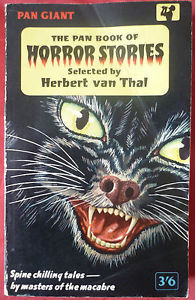 Heald’s story, The Horror in the Museum, was the first time I came across the Cthulhu Mythos, including the dread Necronomicon and some of the usual outlandish names of the “gods” or “demons” included in it, such as Shub-Niggurath, the Goat with a Thousand Young, and Yog-Sothoth. Of course, at the time, I had no idea who Lovecraft was nor any inkling of the Mythos, though it was a story that made a lasting impression on my eleven year old mind.
Heald’s story, The Horror in the Museum, was the first time I came across the Cthulhu Mythos, including the dread Necronomicon and some of the usual outlandish names of the “gods” or “demons” included in it, such as Shub-Niggurath, the Goat with a Thousand Young, and Yog-Sothoth. Of course, at the time, I had no idea who Lovecraft was nor any inkling of the Mythos, though it was a story that made a lasting impression on my eleven year old mind.These were powerful stories. Angus Wilson, perhaps at the height of his literary fame, produced a memorably gruesome story, Raspberry Jam – and who could forget Oscar Cook’s His Beautiful Hands?
Part of the attraction then was the shared pleasure many of us in my form at school derived from stories which we knew were strenuously disapproved by our teachers – who would unhesitatingly confiscate any copy of the book they saw, though for every copy “nabbed” by the staff, others would appear as if by magic – even if they always somehow seemed to be in the same dog-eared state!
Though I was fascinated by most of the stories in this book – most of which stayed as fond memories in my mind – one of them actually put me off reading any more horror for quite some time. I wouldn’t be exaggerating to claim it could have put me off the genre for good. Luckily, like now, I rarely read stories in the order in which they appear in a book, as this was only the fourth one in. George Fielding Elliot’s The Copper Bowl appalled me. I felt sickened by what I read and I couldn’t believe what happened at the end. I still feel a bit of this to this day, and it’s not a story I can fully enjoy reading, though I have reread it since to see how horrifying it really is. To be honest, I have never had any great fondness for stories of this sort, which I suppose could be called a conte cruel – or maybe more accurately torture porn! And, though I nowadays appreciate the stories of writers like Charles Birkin, I do prefer my horror to have a supernatural basis somewhere in it. Similarly in films I have no enthusiasm for the likes of Hostel or slasher movies in general.
After my initiation into horror with the Pan Book of Horror Stories I reverted back to science fiction. But that didn’t last – and in the next few years my interest was revived by anthologies like Vadim’s The Vampireand a chance, second-hand copy of H. P. Lovecraft’s Cry Horror! My fate was sealed."
Before I came across a dog-eared copy of this book, furtively passed round hand to hand during my first years at Accrington Grammar School, I had been an avid visitor to my local children’s library, where I devoured every copy of Captain W. E. Johns’ Biggles books – and his far less well-known science fiction stories too, before reading proper science fiction when I moved on to the adult library. At the time science fiction was the only genre I read till I came across van Thal’s book........ I know these days the Pan Horror series is often associated with over the top horror, much of it written under a variety of pseudonyms, but the first volume – and the largest in the series by far – has some of the biggest names in English literature in it, including Joan Aiken, Peter Fleming, C. S. Forester, L. P. Hartley, Noel Langley, Muriel Spark, and Angus Wilson, the like of which you would be unlikely to find today. There are also stories by Nigel Kneale - famous for his TV dramas such as Quatermass or The Stone Tapes and many others - and Hazel Heald, whose story I later learned was revised by none other than H. P. Lovecraft.
Heald’s story, The Horror in the Museum, was the first time I came across the Cthulhu Mythos, including the dread Necronomicon and some of the usual outlandish names of the “gods” or “demons” included in it, such as Shub-Niggurath, the Goat with a Thousand Young, and Yog-Sothoth. Of course, at the time, I had no idea who Lovecraft was nor any inkling of the Mythos, though it was a story that made a lasting impression on my eleven year old mind.
These were powerful stories. Angus Wilson, perhaps at the height of his literary fame, produced a memorably gruesome story, Raspberry Jam – and who could forget Oscar Cook’s His Beautiful Hands?
Part of the attraction then was the shared pleasure many of us in my form at school derived from stories which we knew were strenuously disapproved by our teachers – who would unhesitatingly confiscate any copy of the book they saw, though for every copy “nabbed” by the staff, others would appear as if by magic – even if they always somehow seemed to be in the same dog-eared state!
Though I was fascinated by most of the stories in this book – most of which stayed as fond memories in my mind – one of them actually put me off reading any more horror for quite some time. I wouldn’t be exaggerating to claim it could have put me off the genre for good. Luckily, like now, I rarely read stories in the order in which they appear in a book, as this was only the fourth one in. George Fielding Elliot’s The Copper Bowl appalled me. I felt sickened by what I read and I couldn’t believe what happened at the end. I still feel a bit of this to this day, and it’s not a story I can fully enjoy reading, though I have reread it since to see how horrifying it really is. To be honest, I have never had any great fondness for stories of this sort, which I suppose could be called a conte cruel – or maybe more accurately torture porn! And, though I nowadays appreciate the stories of writers like of Charles Birkin, I do prefer my horror to have a supernatural basis somewhere in it. Similarly in films I have no enthusiasm for the likes of Hostel or slasher movies in general.
After my imitation into horror with the Pan Book of Horror Stories I reverted back to science fiction. But that didn’t last – and in the next few years my interest was revived by anthologies like Vadim’s The Vampire and a chance, second-hand copy of H. P. Lovecraft’s Cry Horror! My fate was sealed.- See more at: http://gingernutsofhorror.com/10/post...
Published on January 27, 2014 02:18
January 23, 2014
The Following - Series One
 Watched the final episode of the first series of The Following last night. Good performances throughout the series by both Kevin Bacon and James Purefoy and the rest of the cast. And the final episode contained some horrifying and unexpected deaths. It finished on a cliffhanger - and, thankfully, there is a second series. I enjoyed it, though the violence throughout is quite strong and the atmosphere is unremittingly dark, which may not suit everyone. Neither is there much humour in it - if any! The storyline is, I must admit, farfetched, but that doesn't bother me. At least it's consistent and once you accept the basic premise that a highly intelligent psychopath could instil a devout willingness in his followers to do what he demands without question (most of the time) and be willing to sacrifice themselves on his behalf, then the whole thing works. Unlike Dexter, both the main villain and his followers are thorough going psychopaths and kill without remorse or hesitation and, for the most part, without regret. Mind you, neither is Kevin Bacon, our main protagonist, without his darker side and he too can torture and kill without hesitation if he decides that this is what he should do. An interesting scenario.
Watched the final episode of the first series of The Following last night. Good performances throughout the series by both Kevin Bacon and James Purefoy and the rest of the cast. And the final episode contained some horrifying and unexpected deaths. It finished on a cliffhanger - and, thankfully, there is a second series. I enjoyed it, though the violence throughout is quite strong and the atmosphere is unremittingly dark, which may not suit everyone. Neither is there much humour in it - if any! The storyline is, I must admit, farfetched, but that doesn't bother me. At least it's consistent and once you accept the basic premise that a highly intelligent psychopath could instil a devout willingness in his followers to do what he demands without question (most of the time) and be willing to sacrifice themselves on his behalf, then the whole thing works. Unlike Dexter, both the main villain and his followers are thorough going psychopaths and kill without remorse or hesitation and, for the most part, without regret. Mind you, neither is Kevin Bacon, our main protagonist, without his darker side and he too can torture and kill without hesitation if he decides that this is what he should do. An interesting scenario.
Published on January 23, 2014 01:50
January 21, 2014
Parallel Universe Publications to publish paperback version of The Heaven Maker and Other Gruesome Tales by Craig Herbertson
 After discussions with author Craig Herbertson we have decided to published a paperback copy of his short story collection, The Heaven Maker and Other Gruesome Tales. This will be available both direct from Parallel Universe Publications as well as from Amazon and other outlets.
After discussions with author Craig Herbertson we have decided to published a paperback copy of his short story collection, The Heaven Maker and Other Gruesome Tales. This will be available both direct from Parallel Universe Publications as well as from Amazon and other outlets.It is planned to publish this book in late August, in time for Fantasycon.
Published on January 21, 2014 04:50



